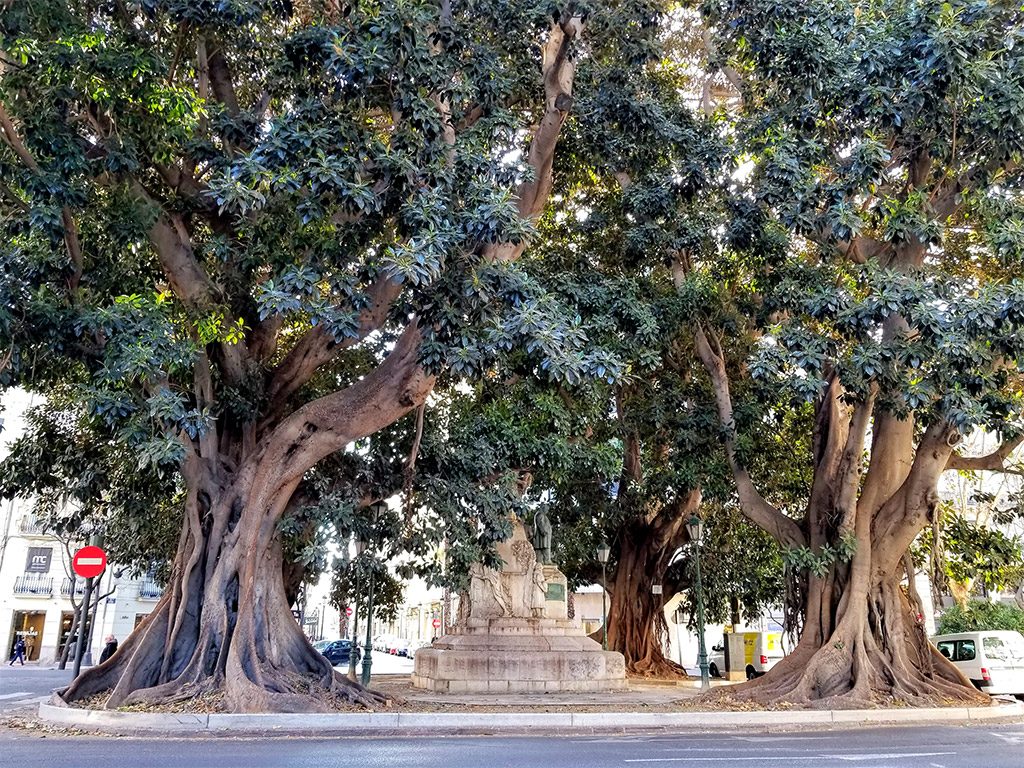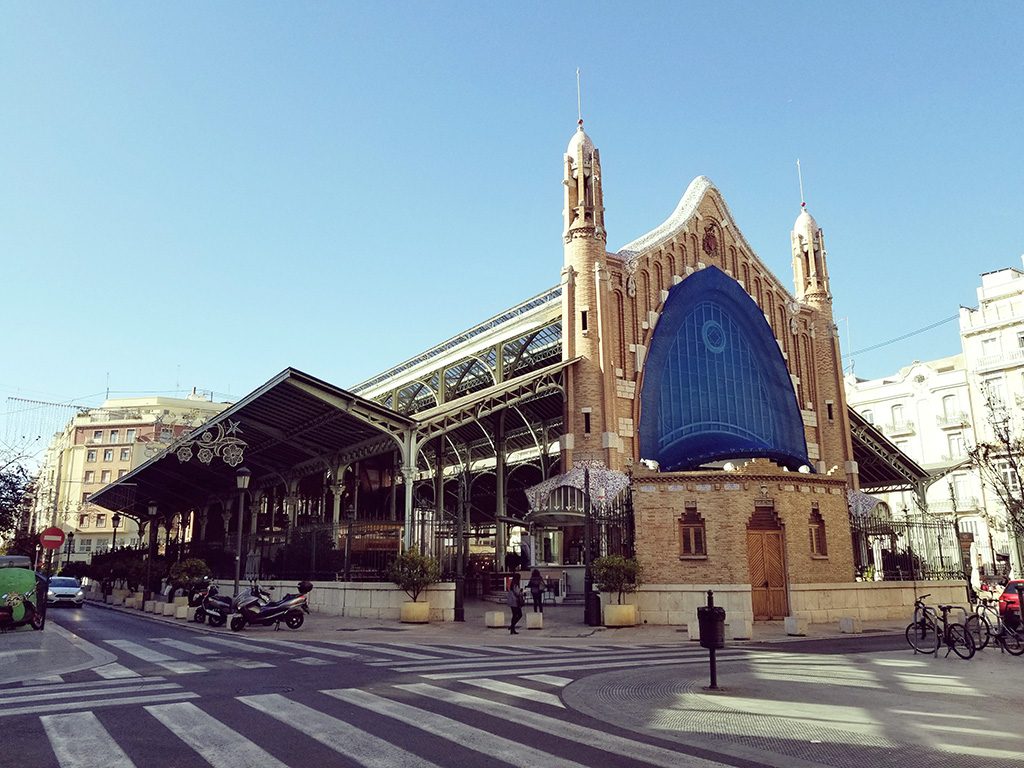
During our first week in Valencia, we had lunch inside the Mercado de Colón, a former traditional market that’s been renovated to house two floors of upscale restaurants, shops and cafés.
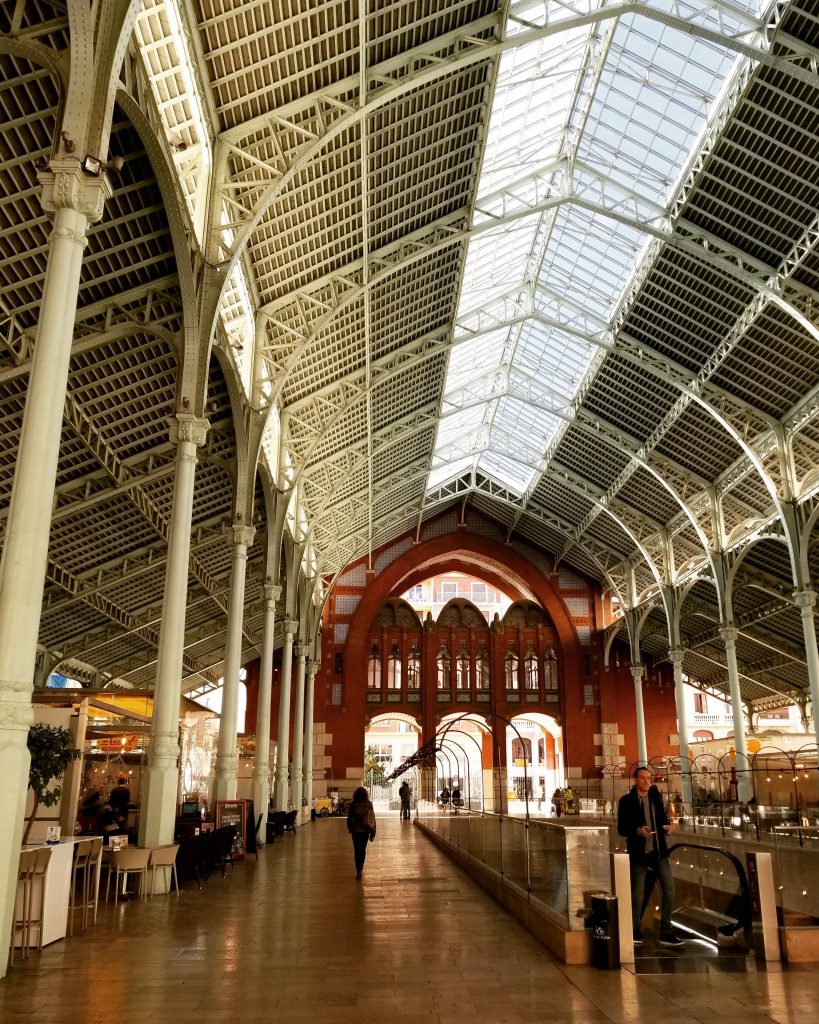
Opened in 1916, the market has stunning Art Nouveau architecture, with intricate wrought iron pillars supporting a partially-glassed roof. Restaurant patios line the sides of the market, which are open to the outdoors. In the middle, escalators lead down to a pleasant but less interesting food court.
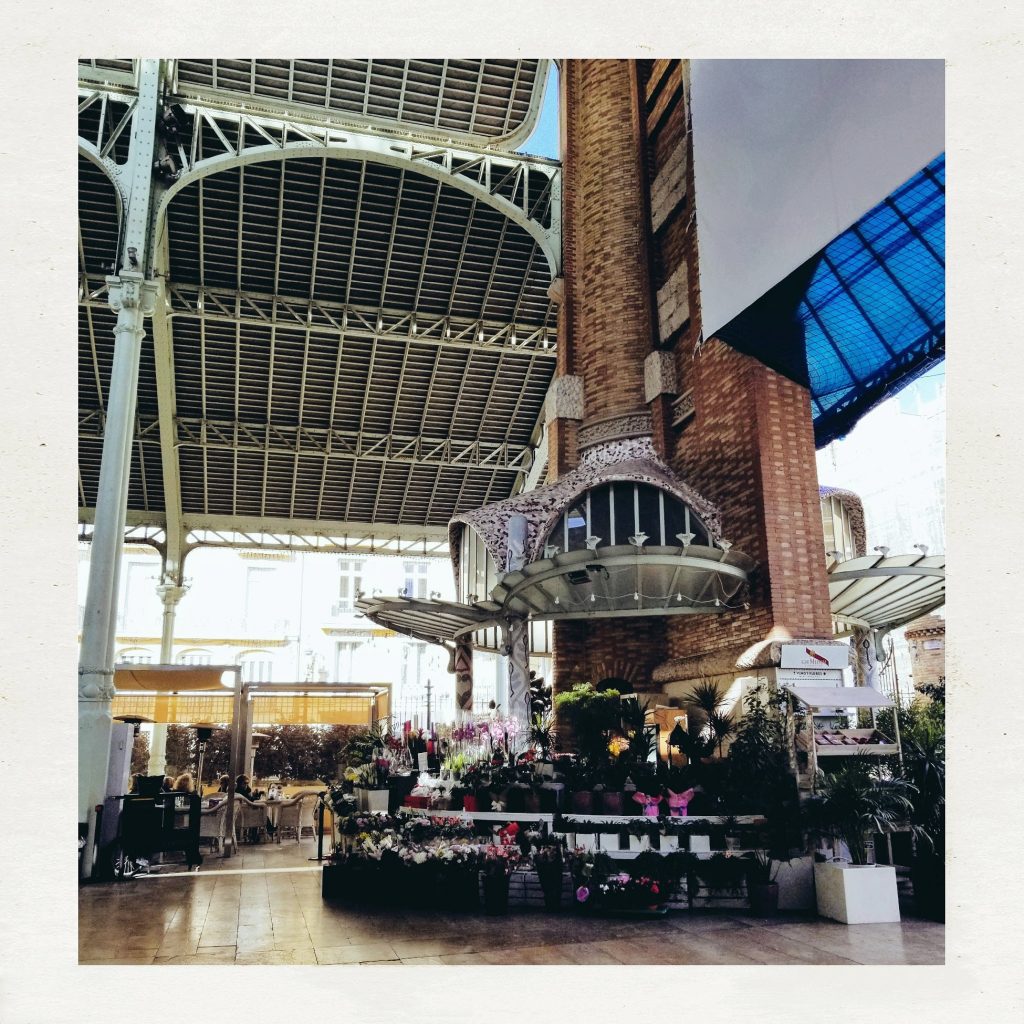
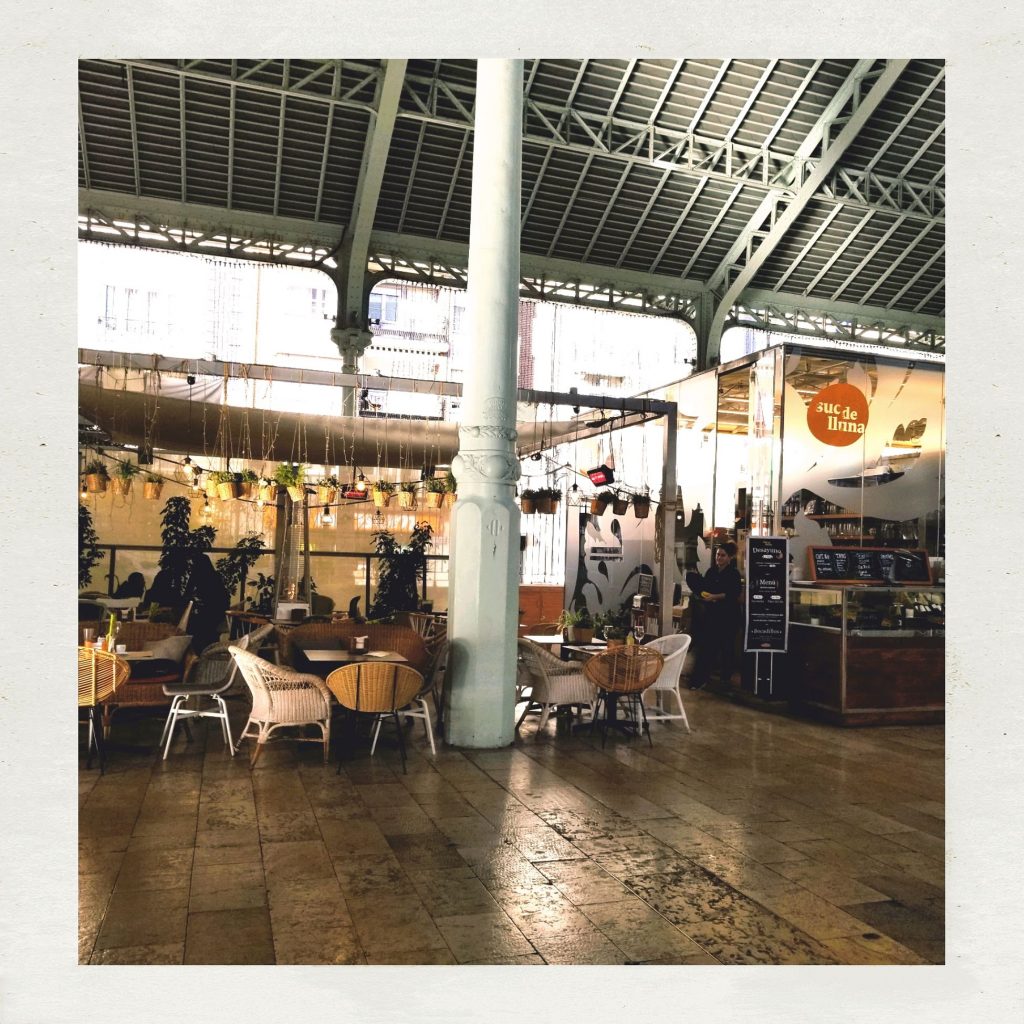
Prices here seem slightly above the Valencian average, but I imagine you’re paying for the atmosphere as well as the food. We took something of a gamble and chose Suc de Lluna for its nice vibe. Josie was also drawn to the giant pan of paella on display near the front. We plan to hit a “proper” paella spot later in the trip, but this was a good preview.
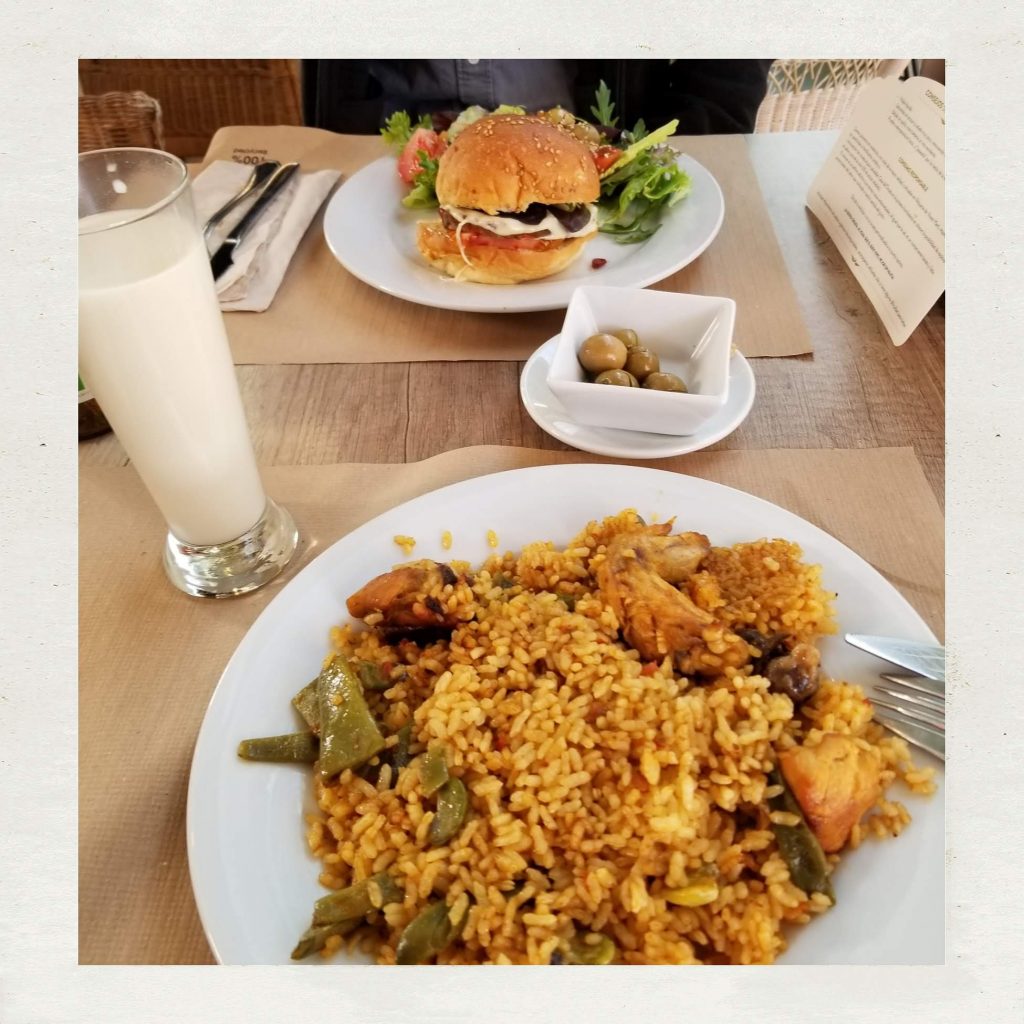
Our gamble paid off and the lunch was very tasty, particularly the paella which had a nice savoury taste that was reminiscent of the “wok hay” of a Cantonese dish. I played it a bit safer, ordering a burger, and then switching to a veggie burger when it turned out they didn’t have any veal left.
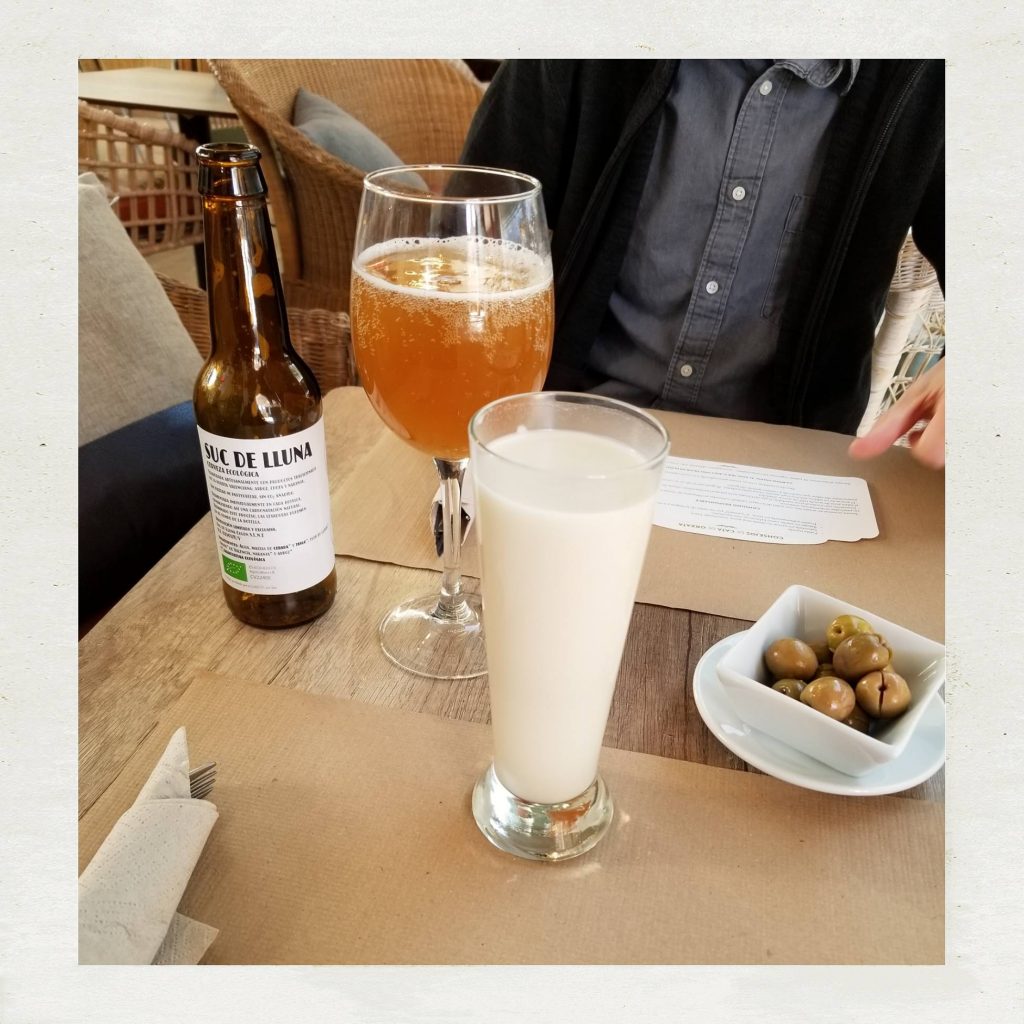
Mercado de Colón is also known as a good place to enjoy horchata (orxata in Valencian). Mostly known as a summer drink, horchata is a cold beverage made with “milk” of the chufa (tiger nut), a crop commonly grown near Valencia. Slightly sweetened, the horchata had a mild flavour similar to an almond milk, and Josie was happy to be able to enjoy something delicious that’s free of caffeine and dairy.
Myself, I tried the restaurant’s own cerveza Suc de Lluna, described as being “flavored with tiger nut, orange and rice … triple Valencian!” It turned out to be highly drinkable and refreshing, somewhat like a lighter Belgian wit.
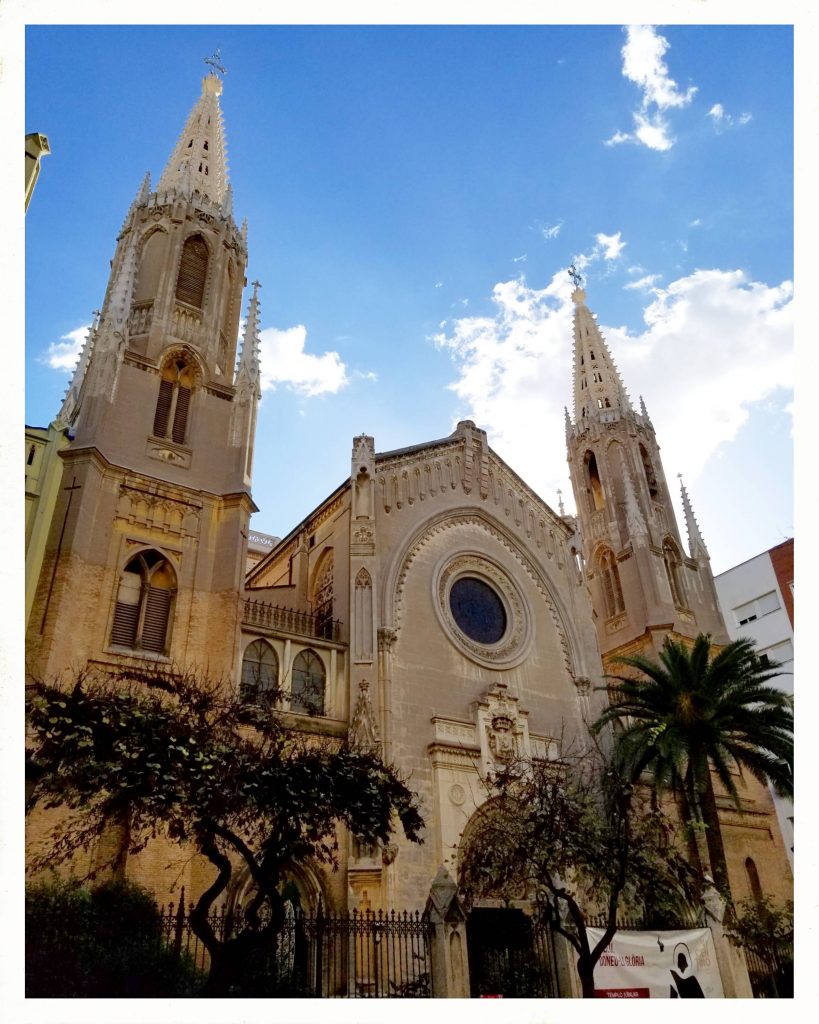
On the way home we passed Basílica San Vicente Ferrer, which is located diagonally opposite the market.
We also encountered various large statues of vegetables on random street corners in the neighourhood. We later learned these are left over from Valencia’s status as “World Sustainable Food Capital” in 2017.
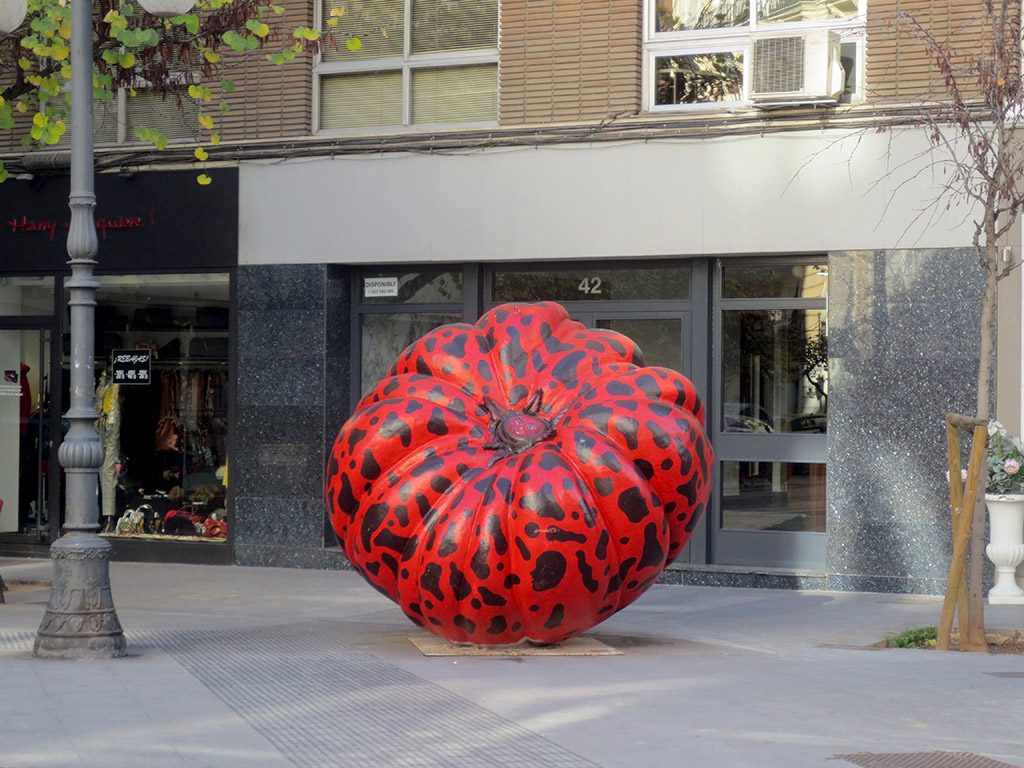
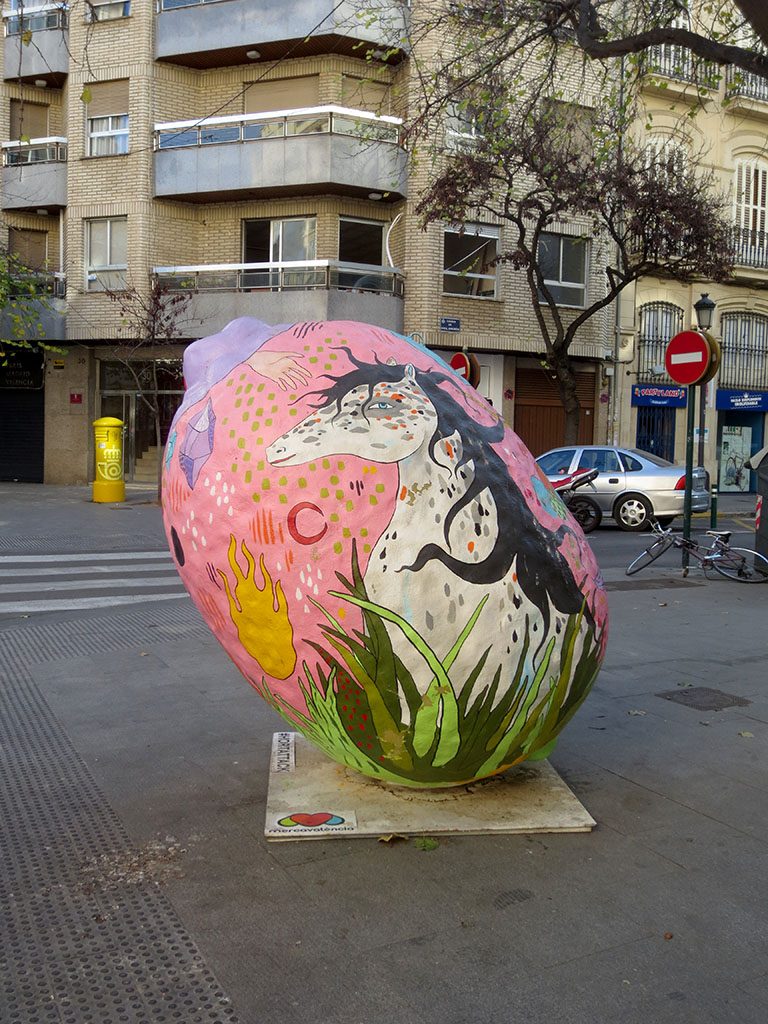
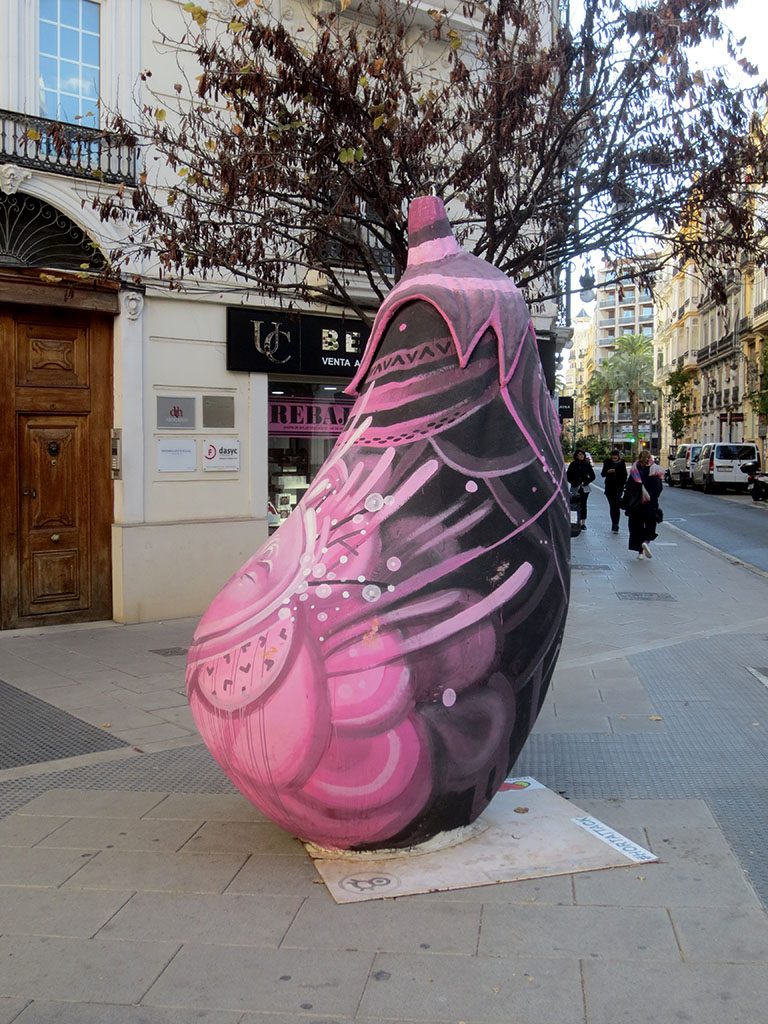
Closer to home, we passed these incredible old trees on a traffic median along Gran Via del Marqués del Túria. Some Googling reveals these are ficus trees, and the statue in the middle honours a Valencian poet named Teodoro Llorente.
